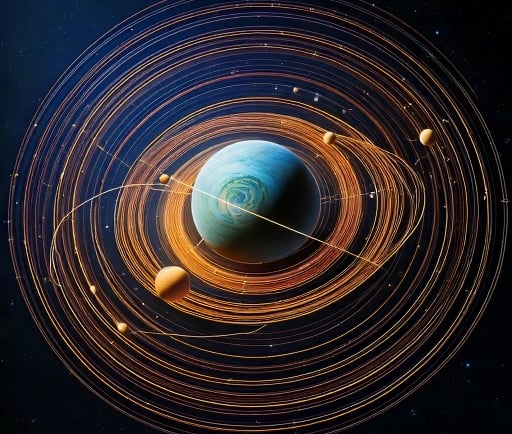Understanding Orbital Resonances: The Motion of Celestial Bodies


Introduction to Orbital Resonances
Orbital resonances are fascinating phenomena observed within celestial mechanics, wherein two or more satellites or planets orbit a primary body and maintain an orbital motion that adheres to a simple ratio of whole numbers. This unique interaction is crucial to our understanding of the dynamics of celestial systems, influencing everything from the stability of their orbits to the potential for collisional events.
The Mechanism Behind Orbital Resonance
At the core of orbital resonances lies the gravitational influence that bodies exert on one another. When two celestial entities, like moons or planets, have their orbital periods in a fixed ratio—say 2:1 or 3:2—they experience gravitational interactions that amplify their mutual alignment. This synchronization can lead to significant alterations in their orbital paths and velocities. For example, the resonance between Jupiter's moons—Io, Europa, and Ganymede—exemplifies this interplay, leading to the fascinating volcanic activity on Io, driven by the gravitational tug from its neighboring moons.
Examples of Orbital Resonances and Their Implications
One of the most notable instances of orbital resonance occurs in the Pluto-Charon system. Charon, Pluto's largest moon, is locked in a 1:1 resonance with its primary. This synchronization results in a unique tidal locking where both bodies always show the same face to each other, creating a visually striking celestial relationship. Such arrangements not only enhance our knowledge of gravitational interactions but also help us comprehend the conditions necessary for sustaining life in other worlds.
Another intriguing case is the resonance observed in the Kuiper Belt, where bodies like Neptune's moons maintain complex resonances with scattered disc objects. While the detailed mechanics may differ, the underlying principle remains the same—both stable and unstable orbits can emerge depending on the resonant dynamics at play. Thus, the study of these resonances provides critical insights into the processes governing the evolution and stability of Solar System bodies.
Understanding the implications of orbital resonances is vital for future exploratory missions. Knowing how celestial bodies interact through gravitational tugs can inform us about potential landing sites, atmospheric conditions, and the likelihood of discovering life-sustaining elements on distant moons and planets.
In conclusion, orbital resonances are not merely numerical relationships; they are the underlying framework that governs the intricate dance of celestial bodies in the universe. By exploring these relationships, we not only enhance our understanding of astronomical phenomena but also prepare ourselves for the wonders that await in our explorations of the cosmos.
